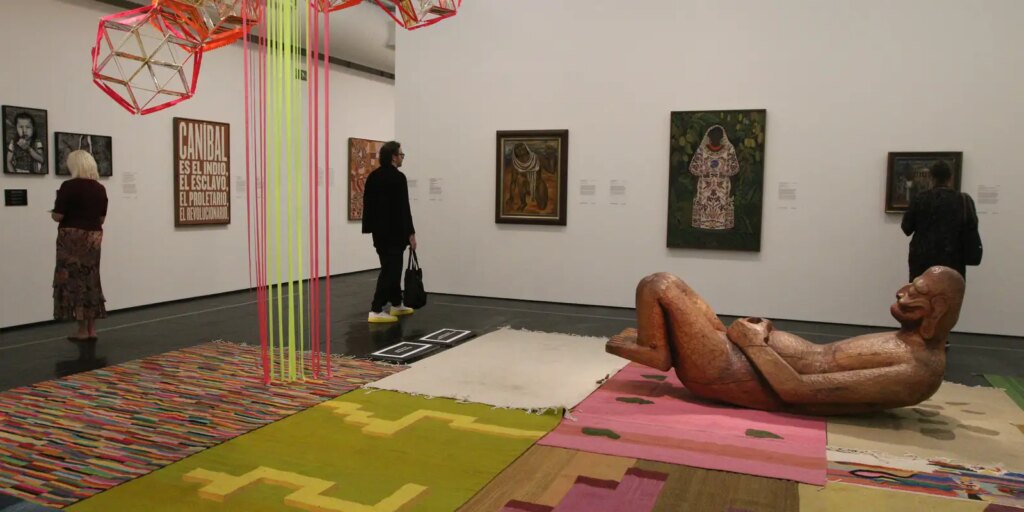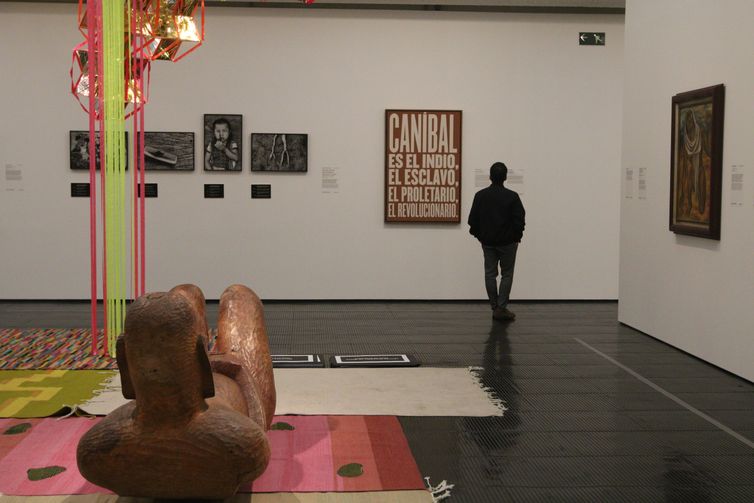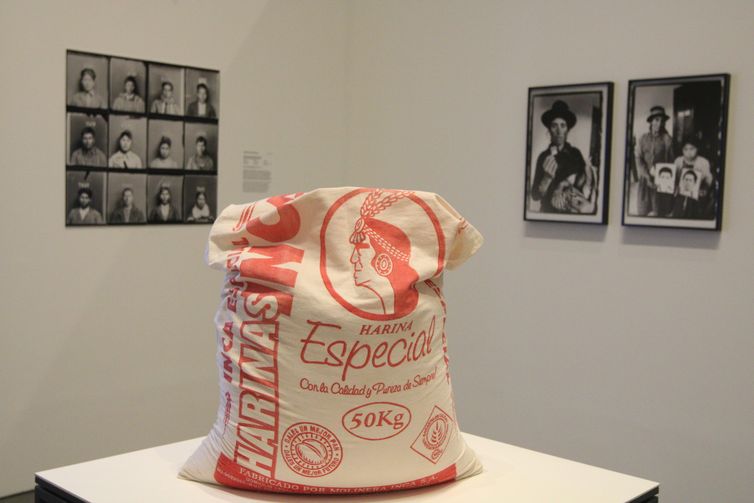
The themes of new exhibitions at the São Paulo Museum of Art (Masp) revolve around indigenous stories, Diné/Navajo tapestry, and Tupinambás knowledge. These three exhibitions are integral to the Year of Indigenous Histories, a theme selected by the museum to explore and celebrate the rich diversity and complexity of these cultures. They were unveiled to the public on October 20.![]()
![]()
The most extensive of these displays is the group exhibition titled “Indigenous Histories.” This showcase comprises 285 works contributed by approximately 170 indigenous artists, offering a unique perspective that spans from the pre-European colonization era to the present day. By means of art and visual cultures, visitors will have the opportunity to explore diverse narratives from indigenous histories across South America, North America, Oceania, and the Nordic Region. The curation team is led by Edson Kayapó, Kássia Borges Karajá, and Renata Tupinambá, with the valuable contributions of several international guest curators.
“All the artworks showcased portray the reality of indigenous peoples, not just in Brazil but around the world. They represent the cosmologies, histories, and challenges that shape indigenous communities. This exhibition serves to shed light on these lesser-known realities to both international audiences and Brazilian society,” expressed Edson Kayapó, curator of indigenous arts at Masp and professor of indigenous history at the Federal Institute of Bahia (IFBA).
The exhibition has been organized into eight distinct sections, commencing with the ‘Activism’ theme. This section unites works from various indigenous social movements, encompassing a diverse array of formats, including flags, photographs, videos, paintings, and posters. “The ‘Activism’ segment holds profound significance for indigenous communities, as it amplifies the voice of the organized indigenous movement,” elucidated the curator. Notably, the exhibition features a video presentation of a pivotal address by Ailton Krenak during the 1987 Constituent Assembly, in which he advocates for the rights of indigenous peoples.
The exhibition encompasses the galleries on both the first and second floors of the museum and is scheduled to be on display until February 25.
Textile Works
The second exhibition features a presentation by Diné/Navajo artist Melissa Cody, marking her inaugural solo exhibition in Latin America. This display includes twenty-six textile works crafted with a traditional Navajo loom, blending ancient symbols and patterns from Diné tapestry with the artist’s unique personal influences.
Titled “Melissa Cody: Woven Skies,” this exhibition is situated in the gallery found within the museum’s first basement and is curated by Isabella Rjeille and Ruba Katrib. Rjeille elaborates, “Melissa Cody, a 40-year-old Diné/Navajo artist, hails from the indigenous people of the United States, traditionally residing in the Arizona region (using ‘Diné’ among indigenous people and ‘Navajo’ among non-indigenous people to refer to the same community). She is an artist who specializes in weaving, an ancient and traditional technique intrinsic to the Navajo culture.”
Within the Diné/Navajo worldview, the art of weaving is regarded as a sacred technology transmitted from generation to generation, through the guidance of Na’ashjéii Asdzáá, the Spider Woman. As the curator explains, “The Spider Woman is a sacred figure, she descends from the heavens and the sacred territories to the Diné people, imparting the skills of weaving to both women and men.”
As an inheritor of this ancient wisdom, Cody represents the fourth generation of artists within her family lineage. Her artistic creations are a captivating fusion of historical symbols and patterns drawn from the rich Navajo tapestry tradition, intertwined with influences extending from the landscapes of her native territory to the pop universe of video games and music. “She herself says that she grew up within the traditional teachings of her Navajo culture and Western culture,” said Isabella Rjeille.
Cody is also known for her large-scale weavings, such as the monumental piece “The Three Rivers,” produced during the COVID-19 pandemic and divided into four parts.
Within the exhibition, one has the opportunity not only to view Melissa Cody’s remarkable creations but also to explore the tools and equipment she employs in her weaving process. Additionally, photographs illustrating the art of weaving are on display.
Video Room
In addition to the two exhibitions, Masp also unveils a video exhibition featuring a new film that delves into the artistry of Glicéria Tupinambá. This documentary was directed and written by Alexandre Mortágua and curated by Renata Tupinambá.
Glicéria Tupinambá, an indigenous artist, activist, and educator, hails from the Serra do Padeiro village, nestled within the Tupinambá indigenous land of Olivença in southern Bahia. She has dedicated her efforts to preserving and rekindling the ancestral wisdom of her village. One of her projects involves the process of crafting Tupinambá cloaks, paying homage to the traditional methods and the sacred rituals they embody.
In an interview with Agência Brasil in September, Glicéria Tupinambá explained that her work is inspired by her connection to a Tupinambá cloak taken from her ancestors many years ago, which was on display in France. This is one of the cloaks taken from the Tupinambás and brought to Europe, which are considered by the indigenous people to be elders or a symbol of memory and resistance. Another of these cloaks, which is in Denmark, is in the process of being repatriated and should return to Brazil at the beginning of 2024.
“While in France, it was the first time that the cloak truly spoke to me. At that moment, I realized that the cloak represented an ancestral presence, a spiritual entity communicating with me. It conveyed the profound message that these cloaks were not only worn by women but also crafted by women. This revelation inspired me to return to my village and embark on the journey of creating such a cloak, unearthing the stitches and fragments that had once belonged to my great-aunts,” Glicéria Tupinambá shared with the reporter.
The video presented at Masp provides an insight into Tupinambá’s work, which redefines the significance of the cloak. This film not only explores the artistic dimension but also serves as a testament to the resilience of the Tupinambá people and their culture. Although it may have appeared dormant at times, this culture is reemerging, revealing its transformative potential.
Presently, the Tupinambá people are concentrated in two Brazilian states: Pará and Bahia, where they have established numerous communities. They are a people who, for a long time, were considered extinct in the history books, explained Renata Tupinambá. The video will remain accessible until December 3.
Crédito arquivo Nacional EBC
Leia Mais em: O Maringá


